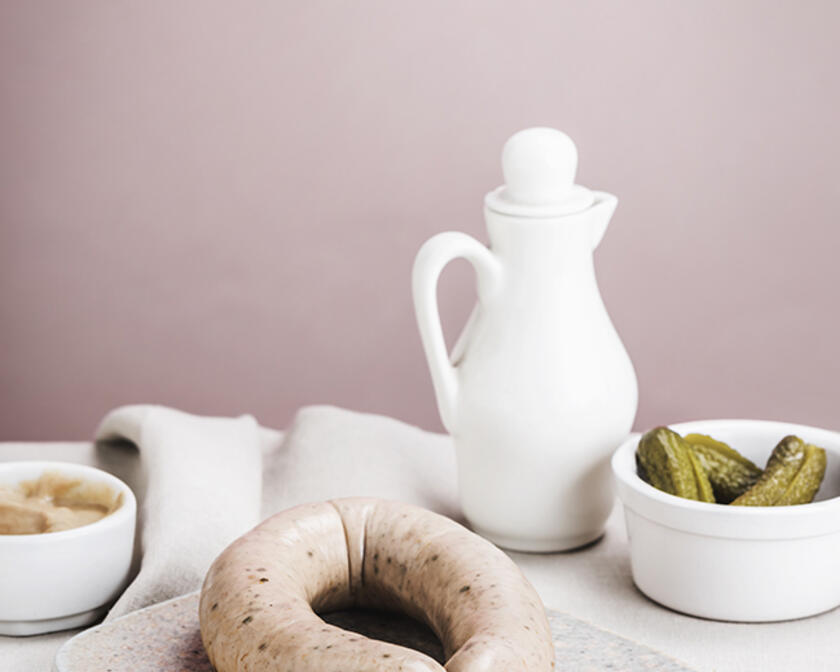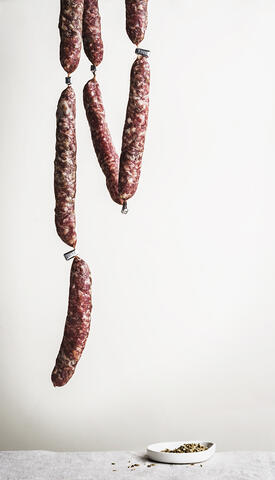Van Eyck recipes January

Sausages: from poor man’s food to heartwarming comfort food
Livestock used to be butchered in the coldest months to lay in supplies for the winter. Parts of the animal that could not be preserved by curing, drying, pickling, smoking or salting were processed immediately after slaughter. Although slaughter traditionally began in November in the countryside, the pots and spits of the Ghentians were lavishly filled with meat at the start of the new year.

